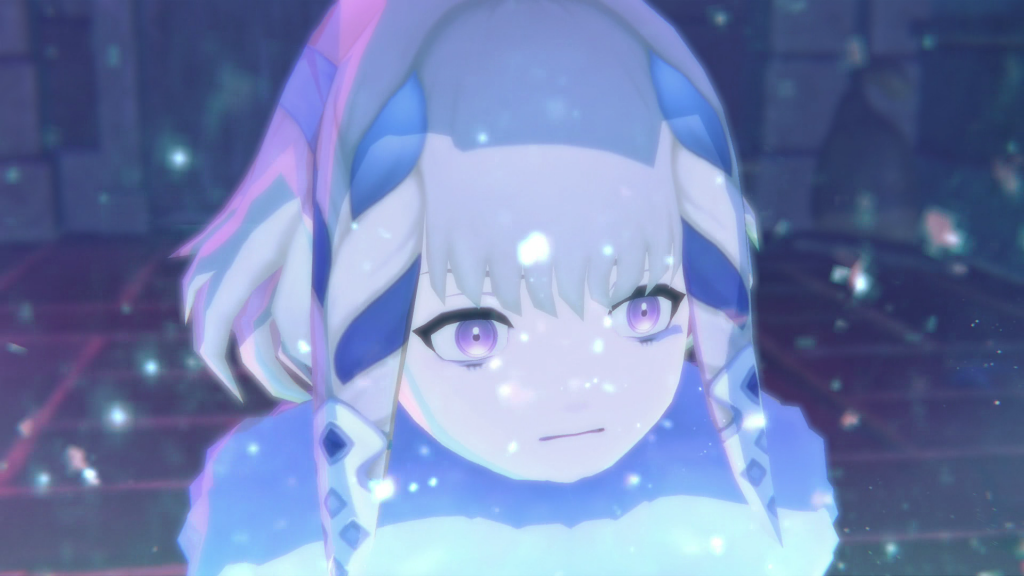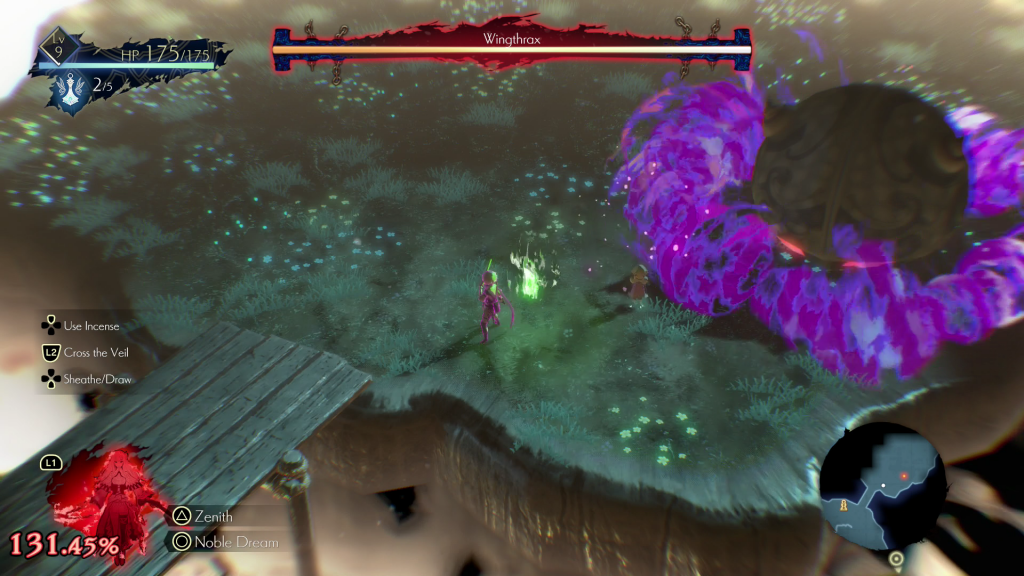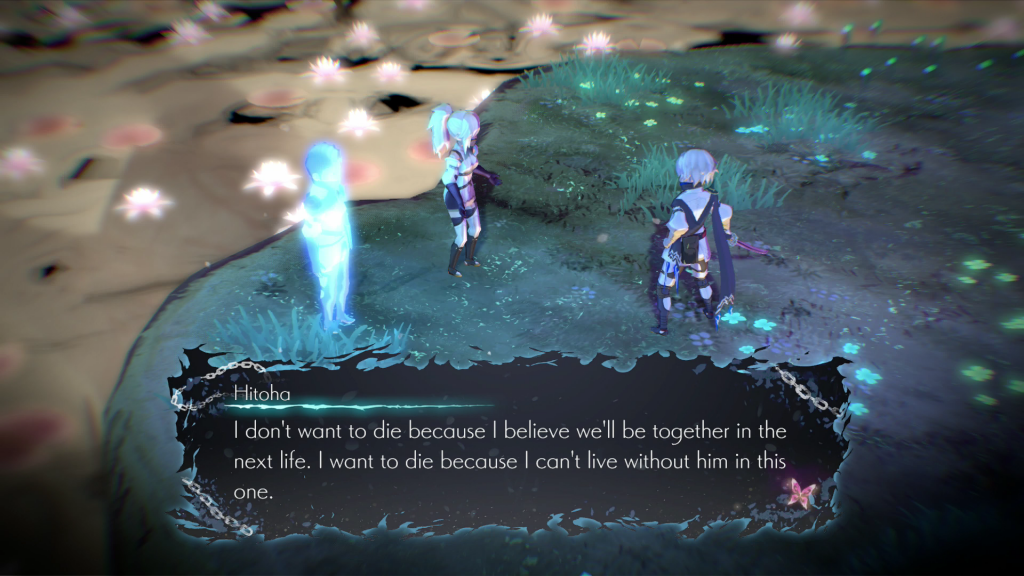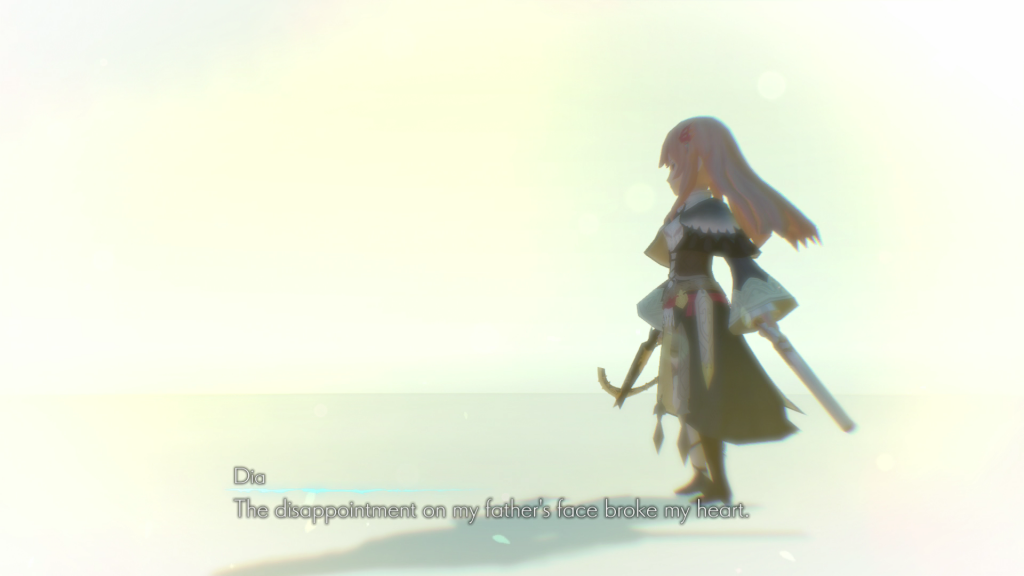Tokyo RPG Factory has made some beautiful and interesting experiences in the past. I am Setsuna manages to develop a fascinating world, without losing anything in the details. However, Lost Sphear managed to miss the mark and fell short of what players were expecting. Oninaki hopes to be closer to I am Setsuna by merging an engrossing world with bright and vibrant visuals. On paper it looks nice but will it be able to meet expectations or did Tokyo RPG Factory just luck out initially?
Oninaki presents a rather basic world and instead of adding a simple concept to it, there are constant questions as to the nature of it. You’re told that you’re a watcher, essentially someone who enforces the laws of reincarnation, with the ability to travel between the side of the living and dead to bring people to peace. The best way to put it is that you’re a reaper without the supernatural stuff attached.

Rather early you’re presented with people who accept reality differently. Some believe in the reincarnation cycle, others try to sanity in the madness, not unlike our own world, with the driving force being it’s both accepted and denied. The actual underlining law of reincarnation is something we could also choose to believe. Instead of giving our lives meaning, we’re told we have past lives but each one is kind of its own thing.
There is a lot more to this crisis than meets the eye. There are spirits you need to help come to terms so they can move on, which is the whole role of a watcher, forces that you can join up with that are a bit more than lost spirits that aid you in circumnavigating the treats around you and the looming threat of a greater evil. And, as much as it wants to tell that bigger story about darkness in the past and the mystery leading to its possible return, there is a stronger emphasis put on interactions. Some of this is Kagachi’s indifference to the ways of those around him, with more than a few people choosing a new life with different opportunities to the misfortune of their current situation. It makes for a fascinating study, even if it is rather overt in what it’s doing.

Between the story segments is a rather lackluster gaming cycle. As an action RPG, you take control of a variety of daemons, essentially spirits that give you various perks, to defeat monsters preventing you from getting to the dead. The average stage comes down to defeat a bunch of enemies, get an item to cleanse the other side, progress between the two until you get to your desired destination.
What makes the loop so lackluster is that the combat simply isn’t there. You get a couple attacks, a healthy number of daemon, some special attacks if you choose to level them but it involves fighting relatively mindless foes. The best way to understand it is, instead of having a lot of enemies and the sense of an unstoppable force like you see in Dynasty Warriors, there is a more modest number of enemies that have a respectable amount of resilience.

Rather early on you find the combat system isn’t built around strong gameplay enemies like Bayonetta or Devil May Cry. You’re meant to either kill your foe quickly or simply avoid attacks. There is no sense of cancelling or deeper mechanics around baiting foolish enemies into giving you the upper hand. Often times the best tactic is simply range and then special them to death. There were more than a few enemies you can obliterate in seconds with a well-timed attack.
Regardless of how engaging the core combat is, not much is done with the two sides. They each have their own enemies, gameplay elements and overall purpose but it could be removed and it wouldn’t change much. Even progression is fairly linear. As you kill enemies you eventually increase your level or unlock perks on your daemon. These can be used to unlock new attacks, abilities or even their backstory. It’s fun once you accept the simplistic nature.

Odds are I come off as rather harsh, as the combat is fun in the same way killing thousands in Dynasty Warriors has its own charm to it. In addition to a story that deals with complex topics and fascinating interactions, is a world that is anything besides dark. It doesn’t matter how dark or negative Oninaki might be, it’s presented as colorful, vibrant and dare I say, hopeful. It allows an edgy adventure to be more than just that game where you kill people who want to die and help the dead to move on.
Verdict
Oninaki is far from perfect. At times the strong can be contrived and heavy handed, which is a shame considering there is some good material there. Visuals are nice, fluid and have their own style that is not dictated by the story it wants to tell. All this is just held back by the repetitive and bland combat system. It isn’t enough to prevent me from having fun, I was engrossed enough to have that desire to explore everything but objectively it really isn’t that amazing beyond standard RPG fare. So, if you want a different RPG story with familiar elements, Oninaki is a fine choice but if you want the next big thing, well, this simply isn’t it.
[Editor’s Note: Oninaki was reviewed on PS4 platform. The game was provided to us by the publisher for review purposes.]
